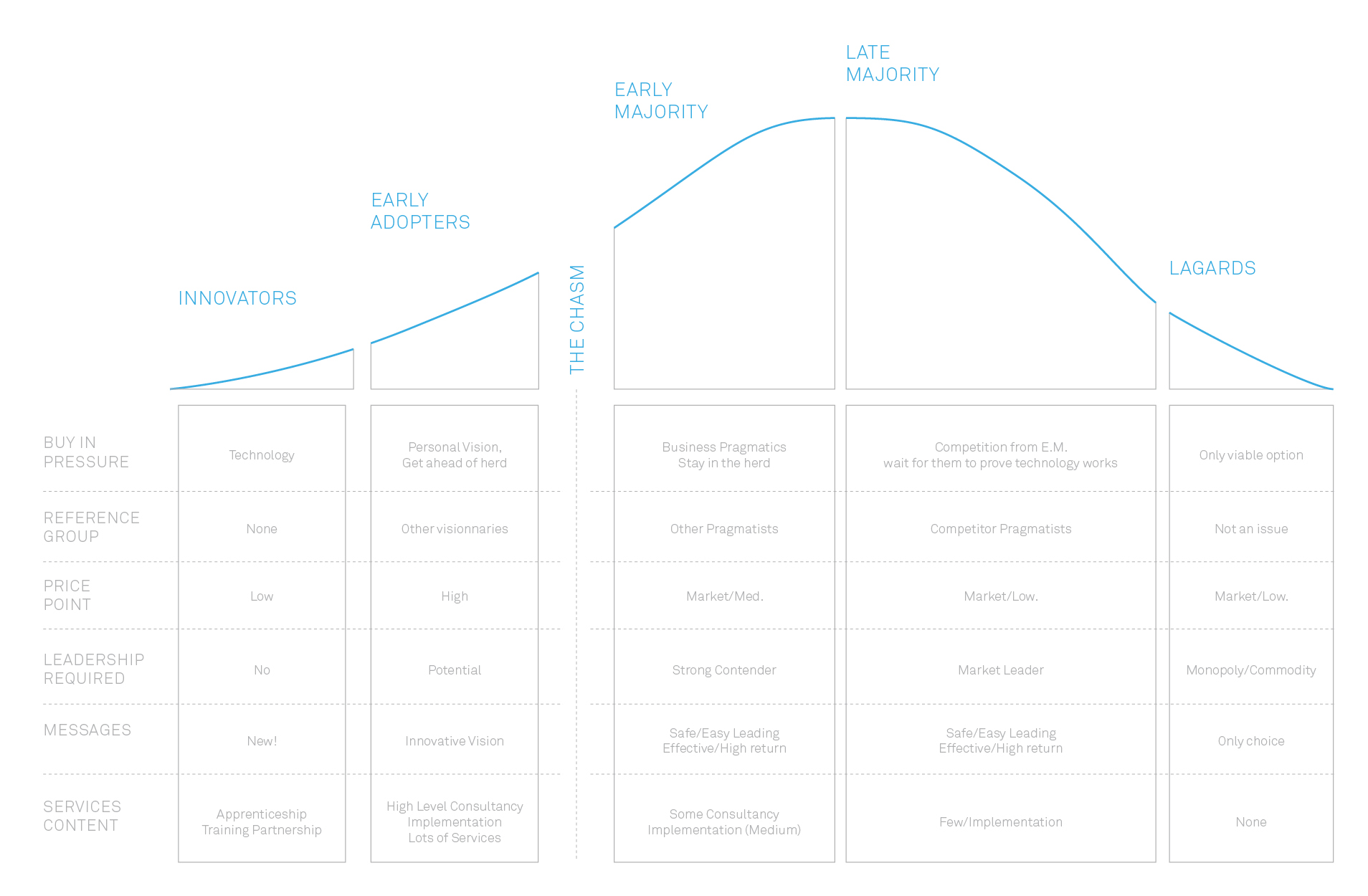
Crossing the Chasm
Launching a new product, accompanying a marketing process…Your strategy shouldn’t rely on random features.
Analysis
The relationship between target and brand
The curve from Crossing the Chasm helps answer two essential questions: what consumer group are we targeting? What is the relationship between this group and the brand?
Once the main target is identified, as well as its relationship to the brand, we can develop a strategy that is tailored to this group. We can also envision strategic plans that will help develop the brand’s communications.
During the first year, trend-setters have to be conquered. The second year is devoted to crossing the chasm. The third year aims at strengthening the early majority.

Comparing Visuals
It is interesting to use the curve and compare visuals used by the competition. This process helps situate the strengths of each substitute brand and to act accordingly.
Here we have a curve from Crossing the Chasm and visuals placed on it.

Crossing the Chasm
The marketing concept “crossing the chasm” was developed by Geoffrey Moore in the early 1990. He was then talking about the industry of new technologies. How can a new product conquer the biggest market shares? How can an ephemeral fad turn into a long-term trend? How can consumers with very different expectations be nevertheless convinced? According to Moore, the market comprises five consumer categories: innovators, early adopters, early majority, late majority and laggards.
Innovators represent a small minority that follow closely the technology industry and try new products enthusiastically. They influence the next category, the early adopters, who are less familiar with new technology but now they can benefit of progress in this field. Consumers in the early majority don’t like fads. They wait until a product is really practical before adopting it.
The late majority waits for the product to be tested and refined in numerous versions. They also want technical support if need be. These consumers represent 33 percent of the market, which is the largest group. The laggards are a minority that is not interested in technology.
Marketing strategists must understand these different consumer types, their expectations and their behaviors. In order to be successful, they must dare to “cross the chasm.” In other words, they must develop a strategy that considers each group individually while keeping a global picture for the product, study the product’s positioning, choose the best distribution channels, and set the right price. A product that only targets one consumer category might fall into the chasm between two categories, and certainly die.
An early adopter is convinced by a product that is new and different; the late majority, however, prefers a product that has been tested and that doesn’t disappoint. The product remains the same, but convincing arguments will vary according to the targeted niche and the chasm to be crossed. A big leap or a fall.
After crossing the chasm, a company must keep its promises and offer a product that meets the consumers’ expectations.
Recommended reading : Geoffrey Moore : Crossing The Chasm : Marketing and Selling High-Tech Products to Mainstream Customers. New York : Harper Business, 1991, 227 p.